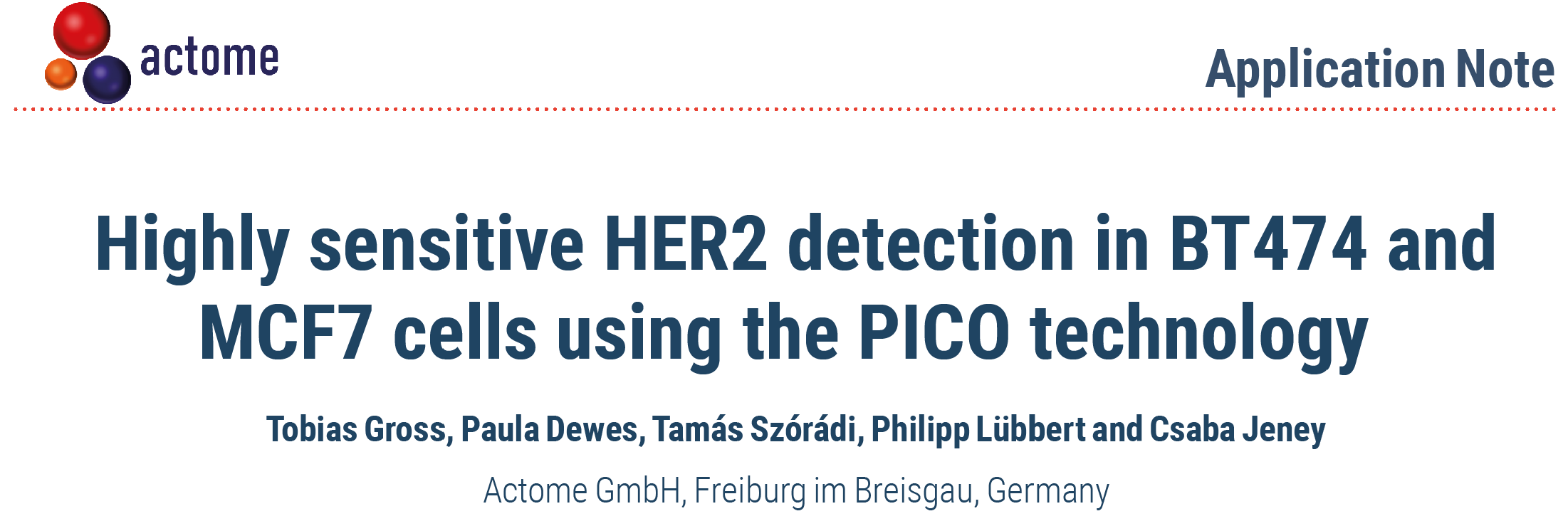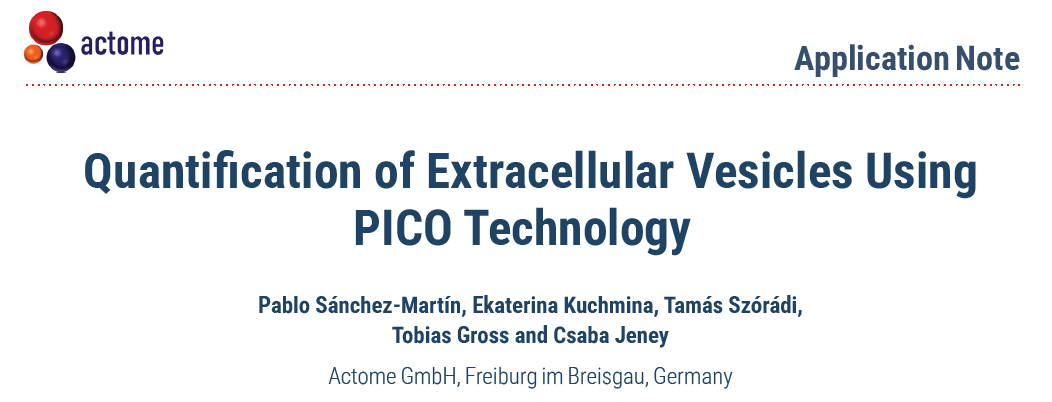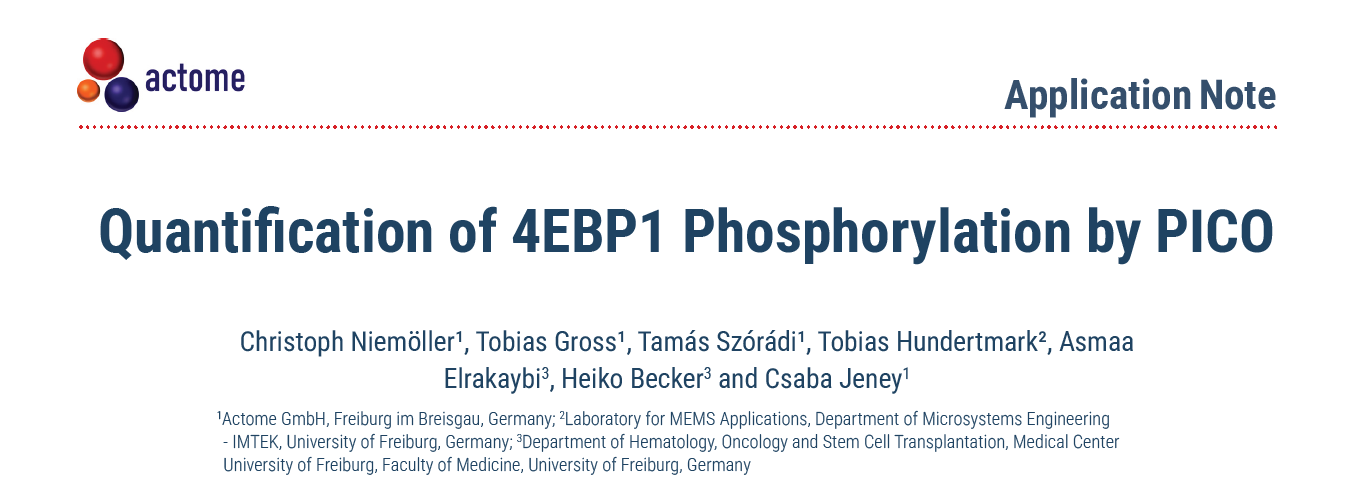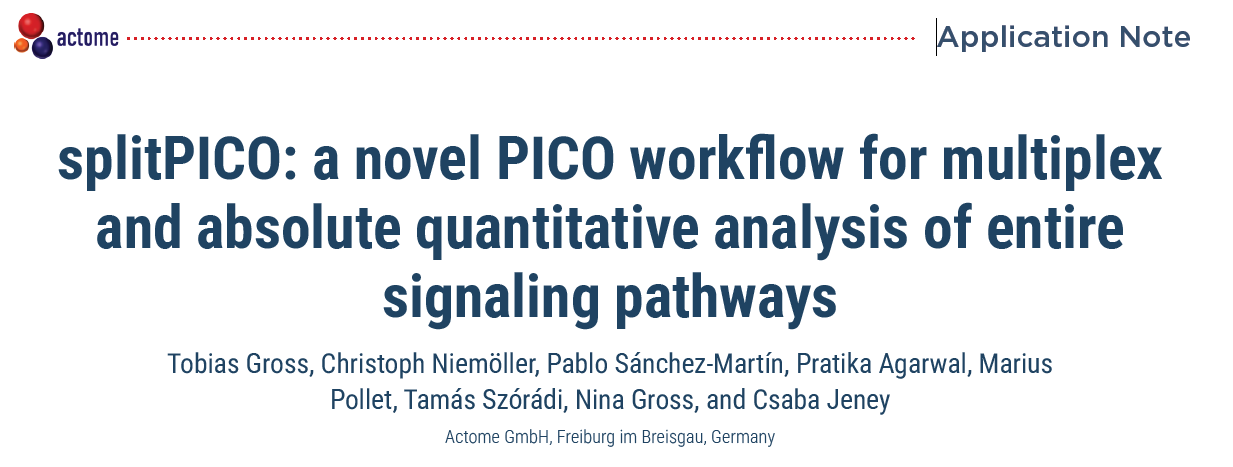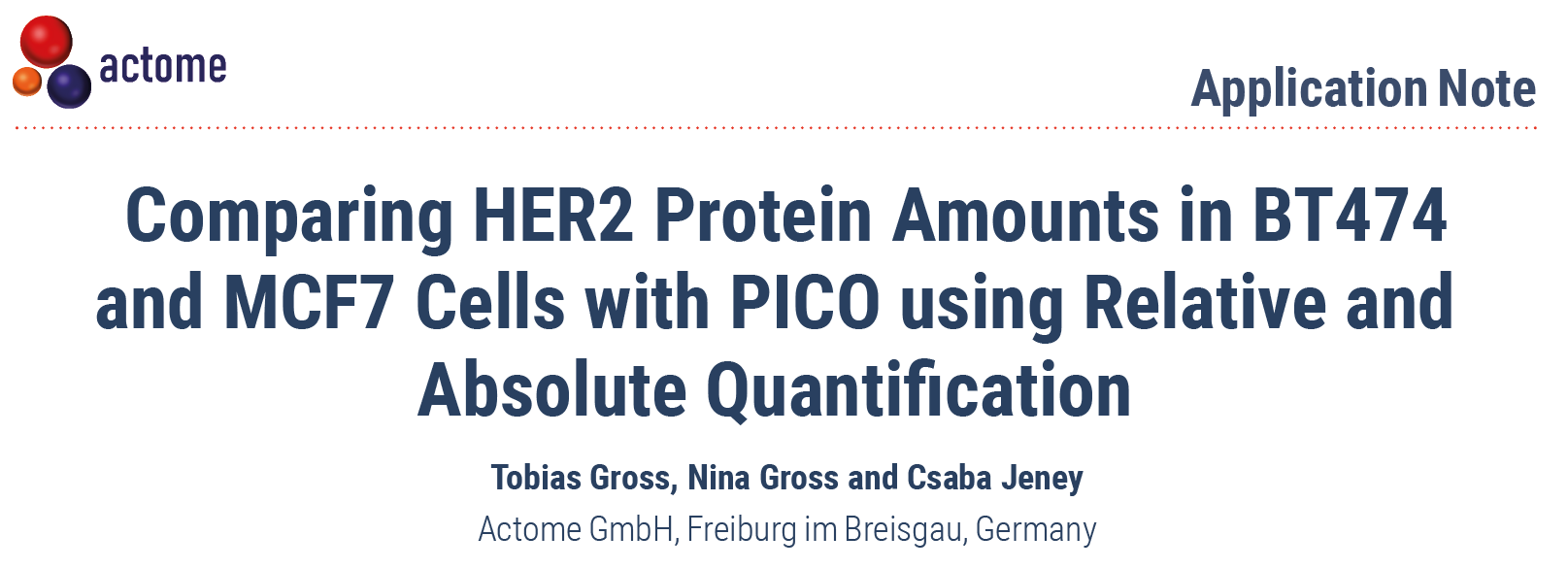Discover the
Protein Interaction Coupling (PICO) technology
PICO Info Materials
- PICO Handbook - Download
- Top 10 FAQ - Link
- Watch our technology explainer video on the right 👀👉
- Award-winning Actome Pitch - BioFit 2022
Scientific Papers
- Gross et al. 2025, Scientific Reports - Link
In this publication the PICO technology is described in all its detail. The major PICO features, including absolute quantification, sensitivity, specificity, and the multiplex capabilities, are demonstrated using the HER2 (ErbB) signaling pathway.
- Gross et al. 2021, PLOS One - Link
In this paper PICO* was used to confirm the CRISPR/Cas9 mediated knockout of RANKL in mesenchymal stem cells. PICO enabled the distinction between homozygous and heterozygous knock-outs from as little as 1,000 cells.
- Karakus et al. 2019, Nature - Link
In this collaborative project PICO* was used to confirm the interaction between bat influenza viruses and the major histocompatibility complex class II (MHC-II) human leukocyte antigen DR isotype (HLA-DR).
* Please note that in both papers PICO was called Emulsion Coupling (EMUC).
Application Notes
- Comparison of PICO vs. Western Blot - Link
In this application note the sensitivity of PICO was compared to western blot. HER2 amounts, a breast cancer biomarker, were compared in the HER2-positive BT474 and the HER2-negative MCF7 cell line. PICO outperformed western blot, regarding sensitivity, by ~ 200-fold.
- Quantification of protein interactions (PPI) with PICO - Link
In this application note we detected and quantified ERBB2 (HER2) and ERBB3 (HER3) in addition to their interaction using PICO technology. Using Absolute Quantification (AQ), we could show that PICO is approximately ~200 fold more sensitive than co-immunoprecipitation (coIP).
Therefore, PICO is a powerful technology to quantify protein interactions and thus to monitor the activity of signaling pathways
- Quantification of extracellular vesicles (EVs) with PICO - Link
In this application note we detected and quantified extracellular vesicles (EVs) from serum and cell supernatant using PICO technology. The data showed that PICO enables the precise detection and quantification of CD63+ and CD9/CD63+ EVs.
- Quantification of 4EBP1 phosphorylation with PICO - Link
Here we detected and quantified 4EBP1 and its phosphorylated form using PICO technology. Using Absolute Quantification (AQ), we could show that upon treatment of BT474 or MCF7 cells with the kinase inhibitor Dactolisib, the phosphorylation of 4EBP1 is decreased ~200 fold.
Therefore, PICO is a powerful technology to quantify post-translational modifications and to monitor the activity of signaling pathways.
- splitPICO: a novel PICO workflow for multiplex analysis - Link
The splitPICO workflow is an upgrade to the canonical PICO workflow enabling the simultaneous detection of 12 different protein targets in a single PICO experiment. In this app note we describe the basics of splitPICO and demonstrates its capabilities in measering proteins, protein interactions, and post-translational modifications in the same signaling pathway.
- Absolute vs. Relative Quantification with PICO - Link
In this application note we compared the two PICO quantification methods: the Absolute Quantification (AQ) and the Relative Quantification (RQ). Using HER2 as the model protein we showed that BT474 cells have approximately 120-fold more HER2 than MCF7 cells.
Contact us!




